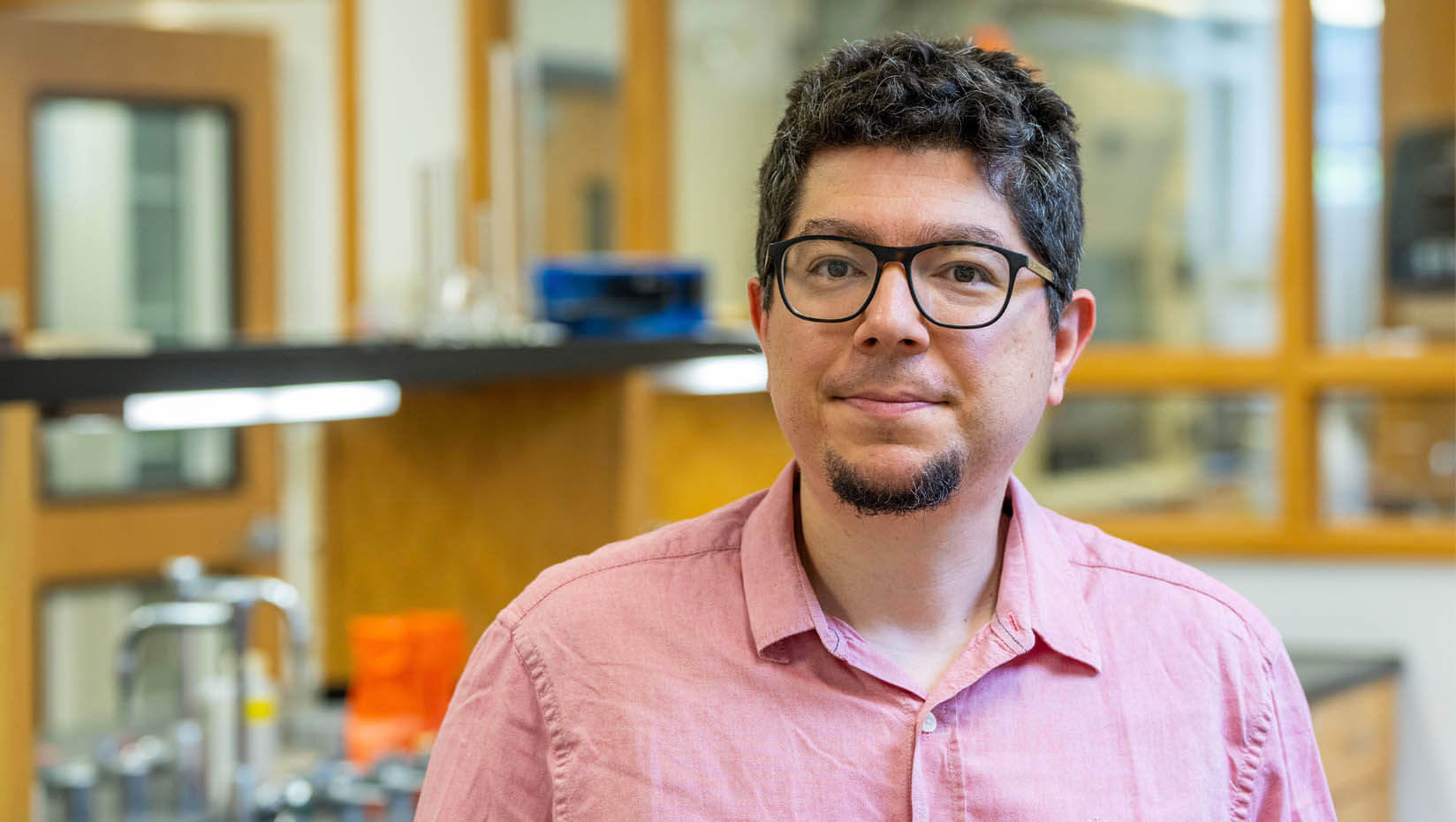
NSF funds Apul’s research into novel approach for eliminating PFAS
Investigating a possible method for eliminating the toxic per- and polyfluoroalkyl substances, or PFAS, is the objective of a new National Science Foundation-funded study led by Onur Apul from the University of Maine.
NSF awarded $250,000 for Apul, an assistant professor of environmental engineering, to research how to remove PFAS, also known as “forever chemicals”, from spent granular activated carbons (GACs).
Many municipalities across the U.S. use GACs, porous substances typically made with coal, charcoal, wood or coconut shells, to adsorb PFAS from their drinking water, since destroying the chemicals is a significant challenge, Apul says. Once the GACs can no longer intake PFAS, they are thrown out or incinerated. Apul says PFAS can then leach from the discarded GACs in landfills into ground or surface water. Burning GACs will release PFAS into the atmosphere.
Rather than discarding them, PFAS-laden GACs can be reused through thermal regeneration, which early research indicates may cause the PFAS in them to decompose, Apul says. For their NSF-funded study, he and David Hanigan, an associate professor with the University of Nevada Reno Department of Civil and Environmental Engineering, and two Ph.D. students will try to determine what properties of GACs, particularly charcoal, and PFAS cause the toxic chemicals to decompose, and which conditions of regeneration can enhance the process without inhibiting GAC recovery.
Their findings could help identify ideal GAC regeneration conditions for eliminating PFAS, and could support efforts to destroy the toxic chemicals in other waste, including biosolids, landfill leachate and consumer products, through incineration and other heat-based treatments, Apul says.
“200 million people in the U.S. are exposed to PFAS via drinking water,” he says. “We can resolve this overwhelming PFAS crisis rapidly, safely and sustainably if we explore the use of available technologies and processes.”
Apul also will conduct another study to better understand how much PFAS can leach from used GACs in landfills.
Environmental Research and Education foundation awarded $150,000 for the project, which Apul will execute with Arjun Venkatesan, associate director for drinking water initiatives for New York State Center for Clean Water Technology at Stony Brook University, and Navid Saleh, an associate professor with the Department of Civil, Architectural and Environmental Engineering at the University of Texas at Austin.
The team will identify which properties of GACs and PFAS influence the leaching process and which types of PFAS are more prone to seeping from GACs. Their research could help landfill operators, lawmakers and other stakeholders devise practices and regulations to prevent PFAS from leaching from discarded GACs and other waste and entering nearby lakes, rivers and streams.
“Landfills are our last line of defense to stop PFAS leaching back into the natural environment,” Apul says.
Apul is one of many faculty members at UMaine, the state’s R1 top-tier research university, studying PFAS and ways to mitigate them and providing technical assistance to Maine farmers and other stakeholders.
Maine’s congressional delegation, led by Sen. Susan Collins, recently secured funding to bolster PFAS research at UMaine in draft fiscal year 23 Senate appropriations bills. If passed by Congress and signed by President Biden, the university would receive $5 million to establish a PFAS analytical laboratory and $3 million for research at that facility that will help inform short-term management decisions for farms experiencing contamination from the toxic chemicals.
Contact: Marcus Wolf, 207.581.3721; marcus.wolf@maine.edu
